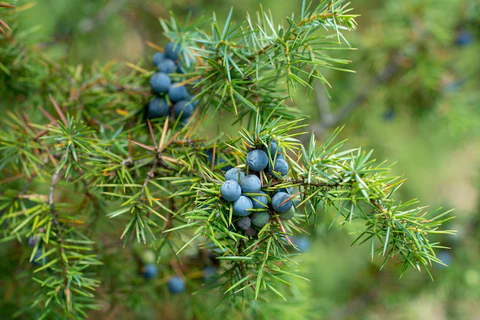
I’m sure you know planting trees can help against climate change:
Each tree in your garden will filter the air around it, absorbing pollutants and locking up carbon in its trunk, roots and soil. It can slow the fall of heavy rain and help drink up water from intense storms. It can scatter the sun’s hot rays, giving shade to cool the air and allowing life to thrive beneath.
Species of wildlife depend on every tree for different reasons. As temperatures rise, water supplies suffer and natural cycles change. Planting more trees increases the chance for wildlife to secure food and shelter during increasing times of trial.
The crab apple’s rounded shape is great for casting shade and cooling the air.
A trooper in dry seasons, the crab apple is considered drought tolerant. Its leaves are a food source for the caterpillars of many moths. Pollinators enjoy an early blooming season, finding an important source of pollen and nectar from early spring. The fruit is popular among birds like blackbirds, thrushes and crows, as well as mammals like mice, voles, foxes and badgers.
Preferred conditions: The crab apple can tolerate full sun and most soil types – it’s partial to dryness, making it an excellent choice to endure droughts.
Juniper is a much-loved evergreen that grows as a shrub or small tree. Its hardy nature and year-round foliage allow it to absorb carbon at a steady pace.
A popular nesting spot, the juniper provides dense cover for small birds such as goldcrest. The fruit is a favourite among birds including fieldfare, song thrush, mistle thrush and ring ouzel.
Expect a burst of yellow catkins to brighten your outdoor space in chilly winters.
Introduced in ancient times, the osier willow has long since benefitted native plant and wildlife species and is naturalised in the UK. Birds enjoy nesting among the branches and its catkins provide an important source of early nectar and pollen for pollinators. Caterpillars of moth species like the lackey, herald and red-tipped clearwing feed on the foliage.
When coppiced, hazel can capture carbon for several hundred years – but it only takes three to five years for the first harvest of tasty hazelnuts.
Hazel is a fast grower and a favourite among birds, caterpillars, squirrels and even dormice. You’ll have to get in quick before the nuts are all gone!
Blackthorn grows as a shrub and can become an attractive tree once mature.
Early flowering, blackthorn is an essential source of pollen and nectar for bees and butterflies like the black and brown hairstreak. Its foliage feeds the caterpillars of many moths while birds nest among the thorny thickets, eating insects and sloes. Blackthorn is quick to mature and doesn’t take long to begin capturing carbon.
Credit to The Woodland Trust: a charity registered in England and Wales (No. 294344) and in Scotland (No. SC038885). A non-profit-making company limited by guarantee. Registered in England No. 1982873.